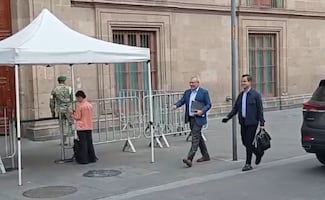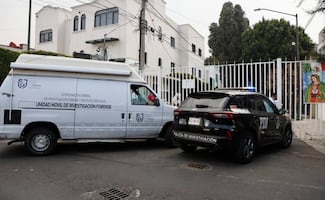Más Información

Senador del PT propone crear televisión, radio y periódico de la 4T; debemos hacer frente a medios de derecha, dice

César Duarte comparece ante jueza en penal del Altiplano; buscan vincularlo por presunto lavado de dinero

¿Qué es el Tratado de Aguas de 1944 entre México y EU por el que Trump amaga con imponer aranceles?; te explicamos

Gobernador de Michoacán se reúne con Sheinbaum en Palacio Nacional; acude también gabinete de Seguridad

Posponen en el Senado discusión y votación de reforma para crear la figura de “jueces sin rostro”; se discutirá en febrero

VIDEO Hallan a pareja sin vida en colonia Lindavista; una de las víctimas era abogado que litigó temas de despojos en Ecatepec
Santa María del Mar
in Juchitán de Zaragoza turns off when the sun goes down. There is no light in the streets: the poles of Mexico’s Federal Electricity Commission (CFE) are just ornaments; for a decade they have not supplied the almost 300 houses of the more than 800 people living in the town located near the Pacific ocean and the Superior Lagoon of the Gulf of Tehuantepec.
This is how the almost 1,000 the Ikoots or Huaves have been living since 2009 when their brothers from San Mateo del Mar blocked their only land access and destroyed the electric network that supplied the community.
Nevertheless, at least 150 houses have four bulbs powered by solar panels the federal government gave them through the Fund for Universal Electric Service of the Energy Ministry (Sener) .
Thanks to this service, they have two contacts to connect a cellphone charger or a television, although they cannot connect many electronic appliances at the time and keeping the light on. They must prioritize.
Although it is a fishing community , Santa María del Mar is far from having a landscape with the typical palm huts adequate for the weather. Their houses look more like cement boxes of one or two floors.
Only the main block is paved , where the municipal office, the public library, the church, the park, and the dome for assemblies are located. The rest of the streets are dirt roads. The office works normally because it has its own solar equipment , which allows it to use a computer, but the library closes before the sun goes down.
The church is not open at night either. It does not have light because no one can pay for the equipment . That is how people got discouraged. For years, the chapel has had no missionary and no priest, only a catechist does what he can to keep faith alive.
Even though the electricity that comes through the solar panels seemed to be the solution to a decade in darkness, the inhabitants cannot pay MXN $149 a month for its maintenance. They can’t because poverty is another prison for 90% of them.
Seven years ago, the 113 fishermen of the cooperative “La Fuerza del Pueblo” they could get up to 100 kilograms of shrimp and many kinds of fish.
Nowadays, if they are lucky enough, they get 1 kilogram, which they sell for MXN $60 . They barely make enough to eat each day, so many choose to work in cities like Juchitán or Salina Cruz.
Besides, they have to sell whatever little they fish on the same day; they might preserve the shrimp and the fish with salt for up to five days, but no longer, they need refrigeration.
And to have fridges once again, they need the solar farm the federal government promised them through the National Indigenous Peoples Institute (INPI).
Santa María del Mar has a health clinic that does not have plant medical personnel , they usually send students doing their community service.
Due to the bad weather , doctors do not take the risk of getting on a boat and do not last for long in the town. The lack of medicines complicates a quality service; it is impossible to do immunization campaigns because vaccines need refrigeration.
The three schools of the town experience the same: teachers do not arrive to give classes if the sea is choppy; in addition, they consider that arriving is a kind of “punishment” or “test” from the teacher’s union.
There are several stores in the town, but the community store Diconsa has been closed for a year, so the prices of products have increased because of the lack of communication.
It has been 10 years, too, since they do not have running water , although they have an elevated tank the state government built them in the period of Gabino Cué Monteagudo.
However, it does not work because there is no connection due to the blockage with San Mateo del Mar.
In the roof of the municipal office, there is a small water tank with a tap at the end of the building which was built by the local authorities in Juchitán, but it does not work either because it needs to be connected to a non-existent network from which the water is pumped.
But even if it existed, it would also need electricity for the water to go up. The other option would be the supply through pipes, but for a decade no vehicle has entered the town by land.
The reason why 1,000 inhabitants are “kidnapped” is because Santa María y San Mateo, two of the four towns of Del Mar, share a strip of land. Both communities have only one road that takes them to Salina Cruz and then to the federal highway.
These towns have had an agrarian conflict for decades: they fight over 3,773 hectares which the administration of Miguel de la Madrid gave to Santa María back in 1984, but that San Mateo wants back.
mp
Noticias según tus intereses
[Publicidad]
[Publicidad]









